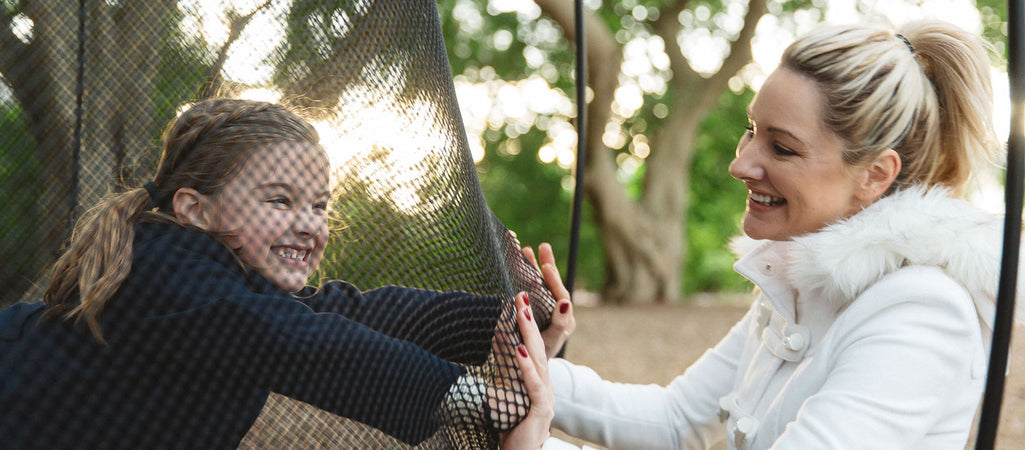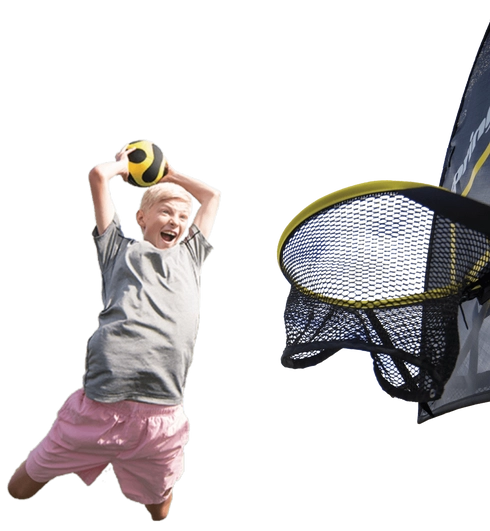Trampoline Buyer's Guide: Buying a Safe Trampoline
min read

As a parent, you want your kids to be safe and happy. And if you're considering a trampoline for your family, you of course want to pick an option that will keep them safe and happy for years to come. But do you know what to look for?
With so many different models and designs available, ranging from very cheap to premium quality, choosing the right trampoline can be tricky. So how can you be sure the model you choose will be the best option for your family?
This buyer’s guide is the perfect place to start. Here are some important considerations to know before you buy.
1. Do Your Trampoline Research
Research is every careful buyer’s best friend. In Australia, trampoline standards are currently only voluntary, meaning trampoline manufacturers don't legally have to comply. So make sure you’re well informed before you purchase.
Efforts have been made to make the traditional trampoline safer and now all trampolines sold in Australia must come with pads over the springs and an enclosure net. But do these features make traditional trampolines safe, or are you better to consider one of the new revolutionary designs? Springfree Trampoline's revolutionary design removed all the impact areas that cause 90% of product-related trampoline injury.
It's important to research the key safety components of each trampoline make and model you're considering.
2. Pads
Made from foam, safety pads usually attach via Velcro or ties and are supposed to offer protection from the metal springs and frame. However they often move around, exposing the parts they protect against. They also rapidly deteriorate in the elements and the foam inside compresses with pressure, becoming thinner and offering less protection. Some trampolines do remove the need for pads or foam; because they boast a soft edge and no hard impact points to be jumped into. This is of course, the safer option: no impact points means you're not relying on flimsy pads for protection.
3. Springs
In 2012, consumer watchdog Choice reviewed 12 popular trampoline models sold in Australia and part of their findings were that springs could cause entrapment and, even worse, strangulation. That’s pretty serious stuff from a piece of play equipment! Aside from these extreme injuries, the springs are responsible for pinching, bruising and trapping little legs that fall between them. This is a design feature best avoided by considering a spring-less model. Springfree Trampoline was in fact the top recommendation by Choice, and the only trampoline they found to pass tests they performed against the Australian Safety Standards.
4. Net
All trampolines now come with an enclosure, but often the net provides little more than a visual barrier. Low quality nets can be similar to fly screens, will easily tear, and deteriorate so rapidly in our Australian conditions that they can offer little protection. If you look at trampolines in backyards around you, more often than not you'll see nets that are torn, sagging and perished. Before you purchase, investigate the quality of the net, what it's made from and whether it is UV treated. You'll also want to check whether the net and mat are separate parts or sewn together in one piece, in case you ever need to replace them.
5. Net Poles
While you’re looking at the net, check out what’s holding it up. Rigid steel poles actually present another hazard to the jumper. A bit of pool-noodle-style foam or thin padding is not going to offer much protection to a head travelling at speed towards that pole either. Remember this feature, along with the net, is supposed to hold the weight of a jumper and be the alternative to hitting the ground at speed. Ideally you’re looking for an enclosure that does not present a hard impact point, that is strong, flexible and will move with the jumper, redirecting them safely back to the jumping area.
6. The Frame
The final design feature to check out is the frame. Firstly, is it strong and heavy duty? And is the frame largely “seamless” or are the joins clunky and obvious, with sharp edges that could offer a nasty encounter. The second thing to check is where the frame is. Look for a frame that sits below the jumping surface.
So here’s your safe trampoline checklist:
1. No springs! Yes – this is possible, and if designed well, is just as bouncy!
2. No pads – look for a design that doesn’t have springs or a frame that need covering up.
3. A strong but flexible enclosure – check for a high quality net that will last, that's held up by flexible poles that aren't made from hard steel, and that can’t be bounced into.
4. A heavy duty frame that sits away from the jumping surface, out of harm's way.
If you find these four things in a trampoline, you’re onto a winner! Trampolines offer so many benefits and most importantly, kids love them. Choose a safe one and you’ll love it too!
The World's Safest Trampoline - Springfree Trampoline!
Springfree Trampoline, The World’s Safest Trampoline, has a number of safety features across all models. Our springless patented design has not only changed the way trampolines work, but eliminated the impact areas that cause 90% of all product-related trampoline injuries. With no rigid poles, no springs, a soft edge and a hidden frame well beneath the jumping surface, Springfree Trampoline is an excellent option. Find out more about Springfree’s safety features here, or watch the video below.
Enjoy reading this article? You can learn more about Springfree Trampoline, or view our trampoline range.

